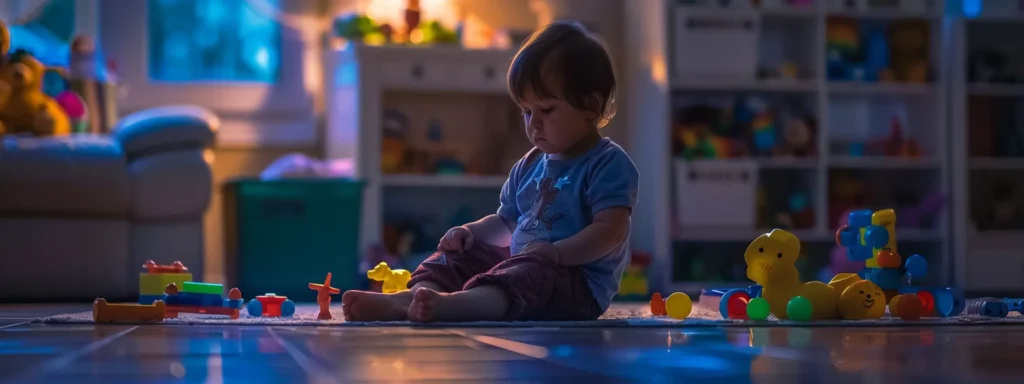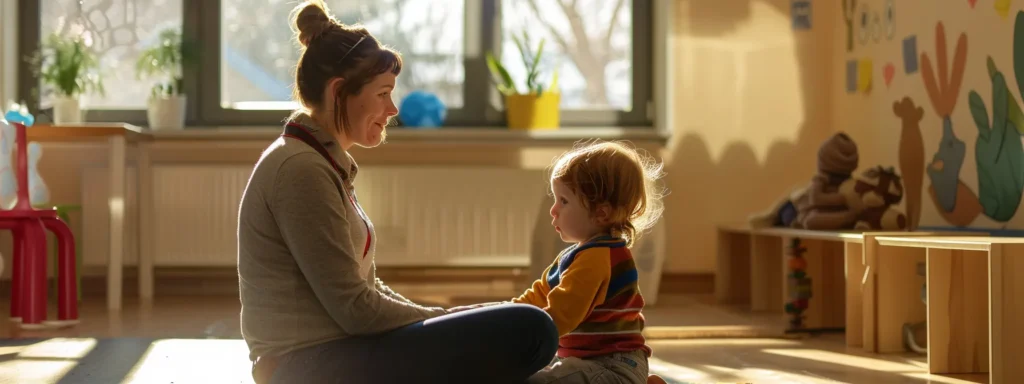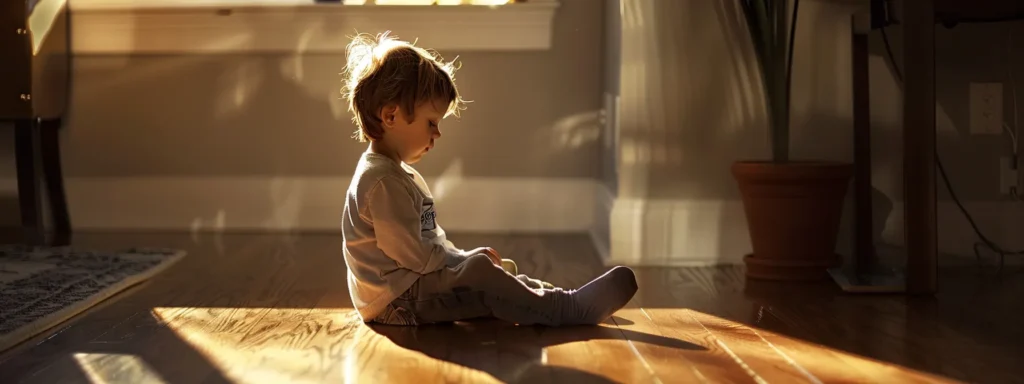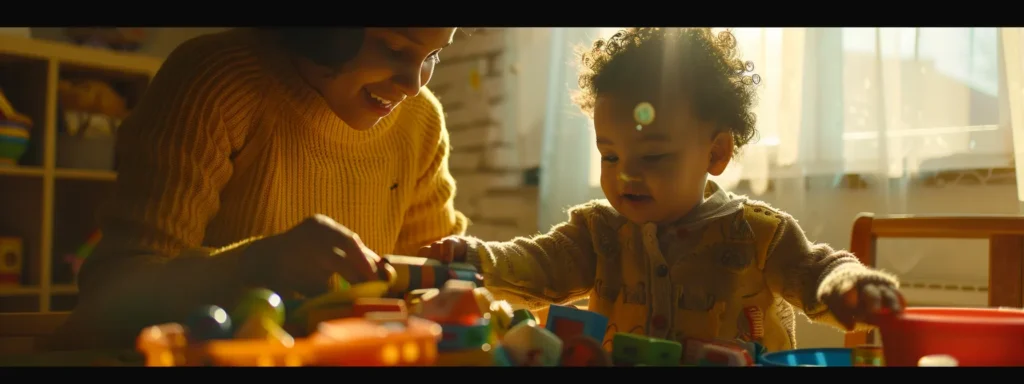Many parents struggle with the frequency of tantrums and disruptive behavior in toddlers. Instead of responding with anger or shame, implementing effective time-outs can redirect attention and teach children valuable lessons. This article will cover the purpose of time-outs in toddler discipline, a step-by-step guide on how to implement them, and alternative strategies when time-outs aren’t effective. By reading this, parents will gain practical tools to manage challenging behavior and reinforce positive actions, ultimately fostering a more peaceful environment at home.
Key Takeaways
- Time-outs can help toddlers learn self-regulation and understand their emotions
- Consistent application of time-outs reinforces boundaries and expectations for behavior
- Clear communication about time-out reasons promotes understanding and emotional growth in toddlers
- Positive reinforcement encourages repetition of desirable behaviors after a time-out
- Seeking professional advice can provide tailored strategies for persistent disciplinary challenges
Understanding the Purpose of Time-Outs in Toddler Discipline

Time-outs serve as a crucial tool in toddler discipline, defined as brief periods of separation to help manage behavior effectively. They can provide valuable insights into the psychological impact on toddlers, particularly during tantrums. Understanding when to implement time-outs enhances their effectiveness, allowing parents and caregivers to distinguish discipline from punishment, fostering a constructive approach to child care for preschoolers.
Defining Time-Outs and Their Role in Behavior Management
Time-outs are defined as brief periods of separation designed to help toddlers manage their behavior more effectively. The American Academy of Pediatrics emphasizes that, when applied with compassion, this technique can foster understanding and prompt children to reflect on their actions. These moments can also encourage creativity in parenting strategies, allowing caregivers to combine time-outs with discussions that reinforce positive behavior, thus enhancing overall discipline approaches for preschool-aged children.
The Psychological Impact of Time-Outs on Toddlers
The psychological impact of time-outs on toddlers can be significant, influencing their emotional development and understanding of boundaries. According to the American Academy of Pediatrics, when used correctly, time-outs help toddlers learn to self-regulate their emotions, reducing the likelihood of relying on corporal punishment in the future. Additionally, research from the Centers for Disease Control and Prevention suggests that effective behavior management strategies, such as time-outs, can decrease the time toddlers spend in front of screens by redirecting their focus toward acceptable behaviors, ultimately promoting healthier developmental outcomes.
Situations Where Time-Outs Are Most Effective
Time-outs are most effective in situations where toddlers exhibit challenging behaviors, such as aggression or defiance. For instance, if a child refuses to share toys and reacts with hitting, a brief time-out in a designated chair can help them process their actions without resorting to corporal punishment in the home. This method allows caregivers to address the signs and symptoms of behavioral issues, guiding the child toward understanding the importance of discipline and helping them learn appropriate responses in the future.
Distinguishing Between Discipline and Punishment
In toddler discipline, distinguishing between discipline and punishment is essential. Discipline focuses on teaching a child appropriate behaviors and helping them understand the emotions behind their actions, while punishment often emphasizes consequences without fostering understanding. For example, when a sibling disputes arise, a time-out can serve as a way to encourage the child to reflect on their feelings and interactions, rather than simply isolating them as a measure of punishment.
| Aspect | Discipline | Punishment |
|---|---|---|
| Purpose | To teach and guide | To penalize and control |
| Focus | Understanding emotions and behaviors | Consequences of actions |
| Outcome | Promotes growth and development | May lead to fear or resentment |
| Example | Time-out to reflect | Isolation without explanation |
Time-outs can be a useful tool for guiding toddlers through their emotions. Now, it’s time to look at how to set up those time-outs for the best results.
Preparing for Effective Time-Out Implementation

Effective implementation of time-outs requires thoughtful preparation. This involves setting clear rules and expectations for toddlers, choosing an appropriate time-out location, such as a bedroom, and communicating the time-out process through conversation. Additionally, establishing consistency in applying time-outs is crucial, especially for children with conditions like autism spectrum disorders or oppositional defiant disorder. These strategies ensure that time-outs are constructive rather than punitive.
Setting Clear Rules and Expectations for Your Toddler
Establishing clear rules and expectations is essential for effectively implementing time-outs. Research indicates that when toddlers know what behaviors are acceptable and what will lead to a time-out, they experience less frustration and confusion during disciplinary situations. For instance, a parent might explain, through a newsletter or informal conversation, that hitting or yelling will result in a time-out, reinforcing the connection between actions and consequences, supported by scientific evidence.
- Define acceptable behaviors to minimize confusion.
- Communicate the time-out process clearly and consistently.
- Use age-appropriate language to ensure understanding.
- Encourage reflection on emotions during the time-out.
Choosing an Appropriate Time-Out Location
Choosing an appropriate time-out location is essential for effective toddler discipline. A designated area should be safe, quiet, and free from distractions, allowing the child to reflect on their behavior and manage emotional dysregulation without the risk of abuse or harm. Parents can enhance their child’s understanding of the concept of empathy by explaining that the time-out space is intended for them to calm down and think about their actions, rather than simply serving as a form of punishment.
- Designate a quiet area for calm reflection.
- Ensure the space is safe and free from hazards.
- Communicate the purpose of the time-out to promote understanding.
- Encourage the child to reflect on their emotions and behavior.
Communicating the Time-Out Process to Your Child
Communicating the time-out process to a child is vital for ensuring they understand the reasons behind this disciplinary strategy. Parents should clearly explain what behaviors, such as aggression or defiance, may lead to a time-out, emphasizing that the intent is not punishment but an opportunity for reflection. By incorporating consistent messages into their parenting styles, parents can reduce the risk of confusion and help toddlers develop a better understanding of appropriate behavior.
- Explain the reason for the time-out clearly and calmly.
- Discuss specific behaviors that warrant a time-out.
- Reassure the child that the time-out is a helpful tool, not a punishment.
- Encourage the child to reflect on their actions during the time-out.
Establishing Consistency in Applying Time-Outs
Establishing consistency in applying time-outs is vital for effective toddler discipline. When parents consistently enforce time-outs for specific behaviors, children begin to understand the feelings associated with their actions, such as social exclusion when removed from play. This structured approach not only aids in the adoption of coping strategies but also helps toddlers learn the connection between their behavior and the resulting consequences, fostering better emotional regulation over time.
Now that the groundwork is laid, it’s time to put those strategies into action. Here’s a clear, step-by-step guide to implementing time-outs effectively.
Step-by-Step Guide to Implementing Time-Outs

Effective implementation of time-outs in toddler discipline involves several crucial steps. First, caregivers must identify behaviors that warrant a time-out to ensure appropriate responses. Next, calmly initiating the time-out session fosters a supportive environment. Supervision during the time-out allows for safe reflection, while concluding the session with a discussion about behavior reinforces understanding. Finally, positively reinforcing desired behaviors enhances child development and mental health, promoting a constructive approach to discipline.
Identifying Behaviors That Warrant a Time-Out
Identifying behaviors that warrant a time-out is essential for effective discipline. Caregivers should focus on actions that stem from fear, frustration, or aggression, particularly in toddlers who may exhibit these responses in a daycare center environment. Common examples include hitting, yelling, or refusal to share, as these behaviors disrupt the learning atmosphere and can cause distress for both the child and their peers in a communal setting.
- Hitting or aggressive actions towards others.
- Yelling or screaming in frustration.
- Refusal to share toys with peers.
Calmly Initiating the Time-Out Session
Calmly initiating the time-out session is essential for effective toddler discipline. Parents and caregivers should approach the situation without anger or frustration, using a soothing tone to explain the reason for the time-out. This calm demeanor helps the child feel secure and understood, rather than fearful, which enhances the learning experience and promotes emotional growth.
- Recognize the behavior warranting a time-out.
- Explain the time-out calmly and clearly.
- Guide the child to the designated time-out space.
- Ensure the environment is safe and free from distractions.
Supervising Your Toddler During Time-Out
Supervising a toddler during a time-out is crucial for effective discipline and emotional growth. Caregivers should remain nearby to ensure the child feels secure, yet allow them the space to reflect on their behavior without distractions. This supervision not only helps maintain a safe environment but also enables caregivers to observe the child’s emotional state, allowing for appropriate guidance and discussion once the time-out concludes.
Concluding the Time-Out and Discussing Behavior
Concluding the time-out effectively is essential in reinforcing the lessons learned during the period of reflection. Caregivers should approach the child calmly, engaging in a brief discussion about the behavior that led to the time-out. This step allows children to articulate their feelings and understand the connection between their actions and the results, promoting emotional intelligence and better future behavior.
| Step | Action | Purpose |
|---|---|---|
| 1 | Calmly approach the child | Reassure them and promote a secure environment |
| 2 | Discuss the behavior | Help the child understand their actions |
| 3 | Encourage expression of feelings | Foster emotional awareness |
| 4 | Reinforce positive behavior | Guide towards better choices in the future |
Reinforcing Desired Behaviors Post Time-Out
Reinforcing desired behaviors post time-out is crucial for effective toddler discipline. After a time-out, caregivers should acknowledge and praise positive actions to encourage continuation of such behavior. For instance, if a child successfully shares toys after a time-out, verbal affirmation such as “Great job sharing!” conveys appreciation and reinforces the desired behavior, helping the child to understand the importance of cooperation.
| Step | Action | Purpose |
|---|---|---|
| 1 | Acknowledge positive behavior | Encourage repetition of desirable actions |
| 2 | Use affirming language | Build the child’s confidence and understanding |
| 3 | Discuss the benefits of good behavior | Help the child connect actions to positive outcomes |
Even with a solid plan, mistakes can slip in. Understanding these pitfalls will help parents use time-outs more effectively.
Common Mistakes to Avoid When Using Time-Outs

Common mistakes in implementing time-outs can undermine their effectiveness in toddler discipline. Overusing time-outs for minor misbehaviors can lead to confusion about expectations. Additionally, giving attention during the time-out period detracts from its purpose. Extending time-outs beyond the recommended duration can increase anxiety, while inconsistency in enforcement can diminish their impact. Addressing these issues is vital for creating a constructive discipline strategy.
Overusing Time-Outs for Minor Misbehaviors
Overusing time-outs for minor misbehaviors can undermine their effectiveness in toddler discipline. When caregivers apply this technique too frequently for less significant issues, it may lead to confusion about what behaviors are truly unacceptable. For instance, if a toddler receives a time-out for simply not sharing a toy, the child may become desensitized to the consequences, failing to understand the difference between minor misbehavior and serious infractions. It is essential to reserve time-outs for more significant behavioral challenges, ensuring that they remain a meaningful part of a well-rounded discipline strategy. This helps establish clear expectations and reinforces the connection between actions and appropriate responses:
| Issue | Impact of Overusing Time-Outs |
|---|---|
| Minor Misbehavior | Leads to confusion and desensitization |
| Overuse | Reduces effectiveness of discipline |
| Clear Expectations | Establishes boundaries for appropriate behavior |
Giving Attention During the Time-Out Period
Giving attention during the time-out period can significantly diminish its intended purpose. When caregivers provide attention, whether through conversation or interaction, they inadvertently shift the focus away from the child’s need for reflection. Instead, maintaining a non-intrusive presence allows toddlers to process their emotions in a calm environment, thereby reinforcing the lesson learned during the time-out.
| Common Mistake | Impact on Time-Out Effectiveness |
|---|---|
| Providing Attention | Distracts child from reflecting on behavior |
| Engaging During Time-Out | Dilutes the lesson of self-regulation |
| Maintaining Presence | Encourages calm reflection without interference |
Extending Time-Outs Beyond Recommended Duration
Extending time-outs beyond the recommended duration can lead to heightened anxiety and confusion for toddlers, undermining the effectiveness of this disciplinary strategy. Caregivers should aim for time-outs that last no more than one minute for each year of the child’s age, as prolonged periods can create feelings of isolation rather than opportunities for learning and reflection. By adhering to appropriate time limits, parents can ensure that time-outs serve their intended purpose, fostering emotional growth and self-regulation in a constructive manner.
Inconsistency in Time-Out Enforcement
Inconsistency in time-out enforcement can significantly undermine the effectiveness of this disciplinary strategy. When parents or caregivers apply time-outs sporadically or selectively, it creates confusion for toddlers about what behaviors warrant consequences. For example, if a child receives a time-out one day for hitting but is ignored the next time they engage in the same behavior, the child may struggle to understand the connection between their actions and the resulting discipline. Consistent application of time-outs helps establish clear expectations and reinforces the learning process, fostering better behavioral outcomes.
Even the best methods can fail in the heat of the moment. When time-outs fall short, other options may offer the connection and discipline needed for lasting change.
Alternative Strategies When Time-Outs Aren't Effective

When time-outs prove ineffective in toddler discipline, caregivers can explore alternative strategies to foster positive behavior. Implementing positive reinforcement techniques encourages desired actions, while utilizing redirection helps manage misbehavior by guiding toddlers towards appropriate activities. Additionally, exploring time-in as an engagement method offers a supportive approach. Finally, seeking professional advice may be beneficial for addressing persistent challenges.
Implementing Positive Reinforcement Techniques
Implementing positive reinforcement techniques can significantly enhance toddler discipline by promoting desired behaviors rather than focusing on missteps. For instance, caregivers can acknowledge and praise a child for sharing toys or using kind words, creating a supportive atmosphere that encourages repetition of good behavior. By consistently reinforcing these positive actions, toddlers learn the value of cooperation and empathy, ultimately fostering a more harmonious environment both at home and in shared spaces like daycare centers.
Utilizing Redirection to Manage Misbehavior
Utilizing redirection to manage misbehavior can be a highly effective strategy when time-outs are not yielding the desired results. By guiding toddlers towards more acceptable behaviors or activities, caregivers can divert their attention from troublesome actions without creating negative feelings associated with discipline. For example, if a child begins to throw toys in frustration, a caregiver can suggest a different activity, such as coloring or playing a game, effectively shifting the child’s focus and reducing the likelihood of further misbehavior. These proactive measures not only address the immediate issue but also promote positive behaviors in a supportive environment:
- Identify triggers that commonly lead to misbehavior.
- Offer alternative activities to engage the child’s interest.
- Use positive language to encourage redirection and cooperation.
Exploring Time-in as an Engagement Method
Time-in serves as an effective engagement method for caregivers when traditional time-outs fall short. Instead of isolating the child, this approach encourages positive behavior by fostering a supportive atmosphere where children can express their feelings. For example, a caregiver might sit with the child during a challenging moment, helping them articulate their emotions and guiding them towards alternative, acceptable activities, such as reading a book or engaging in a calming game, thus reinforcing emotional regulation skills.
| Method | Description | Goal |
|---|---|---|
| Time-in | Engaging with the child during a challenging moment | Encourage emotional expression and coping skills |
| Positive Redirection | Guide towards appropriate activities | Divert attention from misbehavior to constructive engagement |
| Emotional Support | Discuss feelings to promote understanding | Build emotional awareness and regulation |
Seeking Professional Advice for Persistent Challenges
When parents encounter persistent challenges with toddler discipline, seeking professional advice can be an effective solution. Child psychologists or pediatricians can provide tailored strategies based on the child’s unique needs, ensuring that the approaches used align with individual developmental stages. This expert guidance can uncover underlying issues that may be contributing to the difficulties, promoting a healthier, more constructive disciplinary framework that goes beyond traditional methods like time-outs.
| Considerations | Benefits of Professional Advice |
|---|---|
| Individualized Assessment | Tailored strategies for specific needs |
| Expert Insights | Understanding underlying behavioral issues |
| Comprehensive Support | Holistic approaches that incorporate emotional development |
When time-outs don’t work, it’s time to turn the focus to what your child does right. Learning to reinforce positive behaviors can be the key to lasting change.
Reinforcing Positive Behavior After Time-Outs

Reinforcing positive behavior after time-outs is essential for effective toddler discipline. Acknowledging and praising good behavior encourages children to repeat those actions. Implementing a reward system supports positive actions, while modeling the desired behavior provides a clear example for toddlers. Additionally, encouraging open dialogue about feelings and actions fosters emotional understanding, contributing to a supportive environment for development.
Acknowledging and Praising Good Behavior
Acknowledging and praising good behavior post time-out is vital in reinforcing positive actions in toddlers. When caregivers provide specific praise, such as recognizing sharing or cooperation, it not only builds the child’s self-esteem but also strengthens the connection between appropriate actions and positive reinforcement. For instance, saying “I appreciate how nicely you shared your toys!” encourages children to repeat that behavior in the future, thereby promoting an environment of collaboration and care.
- Recognize specific positive actions immediately after a time-out.
- Use affirming language to boost the child’s confidence.
- Discuss the importance of sharing and cooperation to reinforce understanding.
Implementing a Reward System for Positive Actions
Implementing a reward system for positive actions is an effective strategy to reinforce desired behaviors in toddlers. By offering tangible rewards, such as stickers or special privileges, caregivers can motivate children to continue exhibiting good behavior after a time-out. This approach not only promotes positive actions but also helps children understand the connection between their behavior and the rewards they receive, ultimately supporting their emotional and social development.
Modeling the Behavior You Wish to See
Modeling the behavior you wish to see is an essential aspect of toddler discipline, especially after implementing time-outs. By demonstrating appropriate actions, caregivers can effectively teach children how to handle emotions and resolve conflicts. For instance, if a child experiences frustration and reacts negatively, parents can show how to express feelings calmly instead. Reinforcing this modeled behavior helps toddlers understand the connection between positive actions and emotional regulation, ultimately contributing to their social and emotional development.
Encouraging Open Dialogue About Feelings and Actions
Encouraging open dialogue about feelings and actions is essential in reinforcing positive behavior after time-outs. By creating a safe space for toddlers to express their emotions, caregivers can help them understand the consequences of their actions better. For example, asking questions like, “How did you feel when that happened?” allows children to articulate their feelings and reflect on their behavior, thereby promoting emotional intelligence and reducing future incidents of misbehavior.
Conclusion
Proven strategies for implementing effective time-outs in toddler discipline offer caregivers powerful tools for fostering emotional growth and behavioral understanding. By distinguishing between discipline and punishment, setting clear expectations, and reinforcing positive behaviors, parents can create a supportive environment that encourages self-regulation. Establishing consistency and using age-appropriate communication enhance the effectiveness of time-outs, helping toddlers learn to reflect on their actions. Ultimately, these strategies not only promote a child’s development but also strengthen the parent-child relationship through compassionate guidance.
